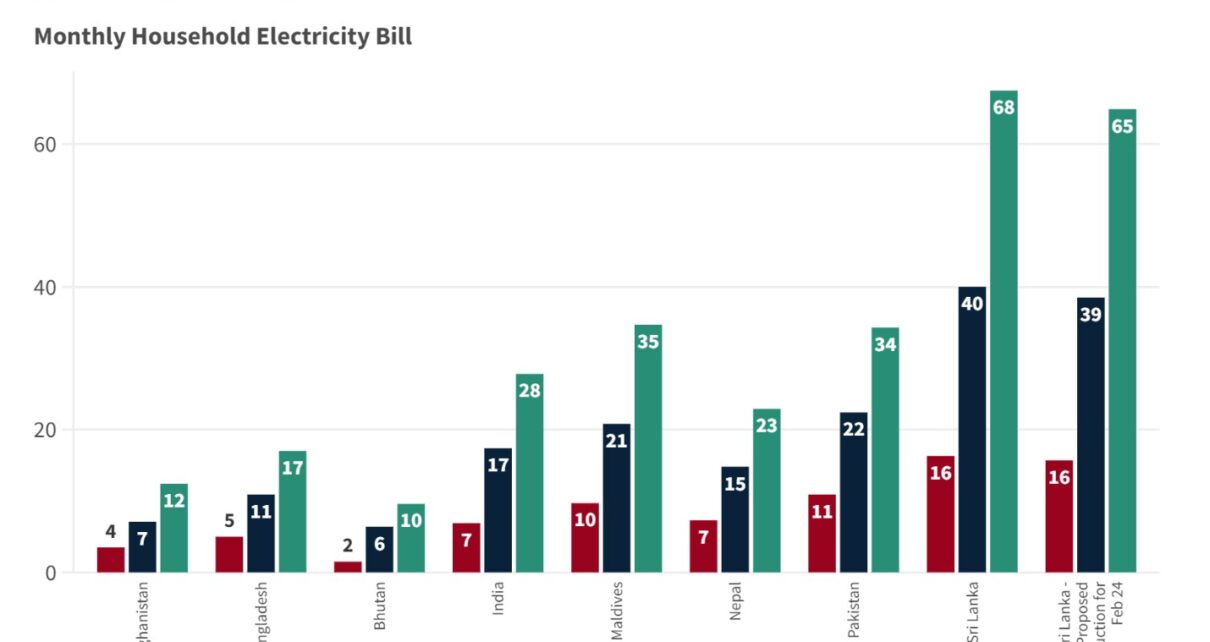By Chanaka De Silva
Why lobby against the US$386 million renewable energy project, which has the potential to change SL’s investment and energy landscape?
As the sun sets on the teardrop-shaped island of Sri Lanka, shadows cast by a contentious battle loom over the nation’s energy landscape.
The stage is set around the proposed 250 MW Mannar Wind Energy Project, where whispers of progress collide with the cacophony of allegations, and the nation finds itself at a crossroads of economic advancement and lies by vested interests. This is even after the project promises, the lowest price and state-of-the-art technology offerings, and also a bare minimum footprint with high output as compared to all existing wind plants.
As the debate over the Mannar Wind Energy Project rages, it’s time to peel back the layers of deception and expose the true motives lurking in the shadows.
Critics argue that purchasing green energy from a foreign-owned entity might strain the Country’s finances. However, this perspective overlooks the substantial economic benefits that come with foreign direct investment (FDI). The Mannar project not only injects US$ 386 million of capital into the Sri Lankan economy but also fosters international collaboration, signalling to investors worldwide that Sri Lanka is open for business, thus paving the way for more FDIs in the long run.
It’s an investment in the prosperity and sustainability of the nation.
One cannot underestimate the positive impact the Mannar project will have on local communities, particularly in the Northern Province. Job creation, skill development programs, and opportunities for small businesses are integral components of the project, contributing to the socio-economic upliftment of the region. The ripple effect of these benefits extends far beyond the 25 years, fostering sustainable growth. The long-term vision should not be overshadowed by short-term apprehensions. The story begins with a glaring truth – Sri Lanka, a land blessed with abundant natural resources, finds itself ensnared in the grip of exorbitant electricity prices.
While our South Asian neighbours enjoy affordable energy, Sri Lankans are burdened with bills that defy reason. Turning our gaze to the heart of the matter, the analysis conducted by Verité Research reveals a stark reality. The numbers speak volumes: we pay 2.5 to 3 times more for electricity than our regional counterparts, plunging countless households into financial distress. In the shadows, the energy sector’s historical legacy of mismanagement becomes a silent antagonist in the tale.

Sri Lanka’s primary energy supply heavily relies on oil and coal, the very sources that contribute to the economic burden and environmental degradation. Yet, the voices that rally against green energy seem conspicuously silent when it comes to addressing the roots of the energy crisis, even though the country is undergoing a strong economic pandemic by way of high inflation, which is impacting the day-to-day life of every citizen. Sri Lanka remains a vulnerable nation amid a worsening global financial condition, according to a think-tank study, basis resilience indicator, published by the Washington-based Center for Global Development. The same was reported by REUTERS financial market experts and Adaderana.lk News.
As we peel back the layers, a narrative emerges – a story of vested interests and the silent reign of fossil fuel mafias. The Mannar Wind Energy Project seeks to harness the power of Sri Lanka’s winds for a sustainable future. However, a lobby fueled by vested interests seeks to thwart progress. The stranglehold of such monopolies over the nation’s energy sources becomes evident, their interests diverging from the collective welfare of the people. In the shadows, a web of propaganda unfolds – an antisocial, antinational agenda that manipulates public opinion. Baseless allegations on environmental grounds and concerns about bird corridors become tools in a larger game against the nation’s economic prosperity.
The question echoes – are these concerns genuinely rooted in environmental stewardship, or are they part of a more sinister agenda? The Mannar Wind Energy Project, a beacon of hope in a sea of despair, becomes a target for sabotage, its potential to uplift the nation squandered in the name of narrow-minded agendas.
In this unfolding drama, Minister Kanchana Wijesekera takes centre stage. When he took over the reins of the energy sector, chaos reigned supreme. Mr. Kanchana’s efforts to bring the supply side under control are highly commendable, however, it remains a Battlefield rife with challenges – influential vested interests, inefficient bureaucratic processes, and resistance against renewable power from within the CEB (Ceylon Electricity Board), which can be seen even during the present energy sectoral reform.
As Sri Lanka stands at a crossroads, the path forward is clear: The US$386 million, 250 MW Mannar Wind Energy Project symbolises a beacon of hope. We must reclaim our energy future from the clutches of corruption and greed. By embracing renewable energy and breaking free from the shackles of fossil fuel monopolies, we can pave the way for a brighter tomorrow. It’s time to hold the powers that be accountable, to demand transparency and accountability, and to ensure that the energy sector serves the interests of the people, not the pockets of the privileged few.
In the battle for Sri Lanka’s energy sovereignty, the stakes are high, but the potential for change is limitless. It’s time to cast aside the shadows of corrupt vested interests and usher in a new era of prosperity, powered by the untapped potential of renewable energy and fueled by the collective will of the Sri Lankan people thus enough efforts/steps are being taken up unwinding the economic corridors through an infusion of around US US$3 Billion by Foreign Investors in the Renewable Energy sector is under consideration by the Government of Sri Lanka.
ENDS


